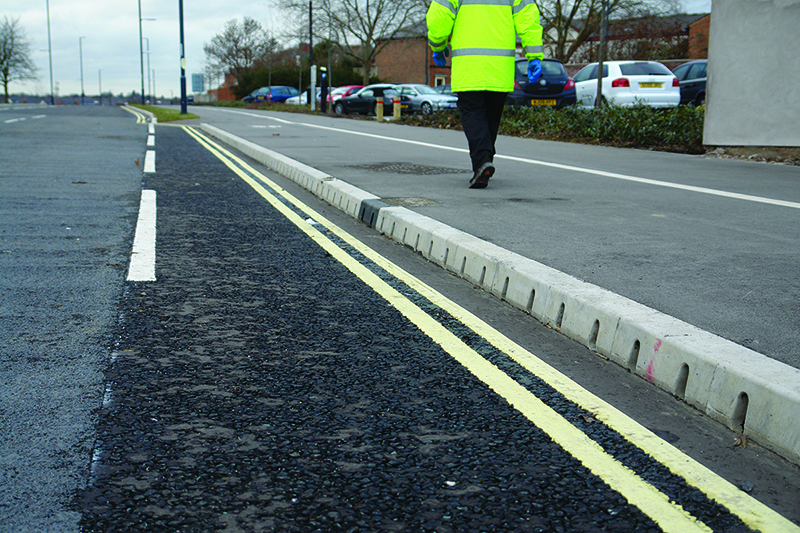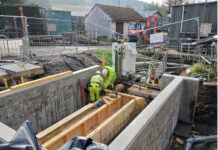
As Scotland experiences increasingly volatile weather conditions, it is more important than ever precautions are in place to prevent them causing havoc to infrastructure. Here, Rob Butcher, design services manager at ACO Water Management, explains why stakeholders at every level of the construction industry must acknowledge the growing risks posed by ageing drainage infrastructure, poor maintenance schedules and increasingly volatile weather patterns.
WITH some forecasters predicting that weather volatility could become a long-term occurrence, it is becoming clear that all parties involved in water management system design need to factor in increased contingency for climate change. Whether it’s contract engineers and specifiers or local authorities, it is likely that greater funding for more stringent maintenance processes will also be required if Scotland is to avoid the issues rising in the future.
When Storm Brendan hit Glasgow in December 2019, it brought roads and railways to a halt as the infrastructure was unable to cope with the excess water. If Scotland continues to experience more common extreme weather episodes, such as prolonged rainfall or weeks’ worth of rain within a 24-hour period, regular maintenance of drainage channels will be more important than ever to mitigate long term damage from extensive flooding.
Reduce the risk of flooding
Drainage systems must be designed and maintained correctly to ensure they are fit for purpose. This involves considering the volume of water that will need to be managed and carrying out regular maintenance to allow the hydraulic capacity of the system to be as efficient as possible.
Following times of prolonged or heavy rainfall, it is especially important to check that the drainage channels have been cleared, as the risk of excess silt building up increases. This is particularly vital if rainfall followed periods of dry weather.
Identifying the potential problems early is essential and building engineers and project managers have an important role to play here. By engaging with water management specialists at the earliest opportunity, there will be no concerns over maintenance not being factored in at the design stage. This will be due to the appropriate access units being placed into the channels to start with, supporting future inspections.
Planning ahead is key
Many water management systems have been in place for a number of years that have not necessarily been designed to deal with the more frequent weather changes experienced in recent years. Surface water drainage systems are often designed to cope with a 1:30-year storm, but as our climate changes, the base levels will need to be closely assessed when designing for new projects. For example, a combination of a low hydraulic capacity design and poor maintenance is likely to heighten the flood risk, so assessing these areas thoroughly is crucial.
Available support for engineers
Unfortunately, nobody can control the weather, however engineers have an important role to ensure flood risks are mitigated. Those working on the design of drainage systems and roads should look towards utilising platforms which identify accurate rainfall data of the geographical area they are working on, and manage drainage appropriately.
Similarly, infrastructure designers must utilise platforms able to identify accurate rainfall data for the geographical area they are working on to ensure suitable drainage is implemented.
Taking advantage of online tools, such as ACO’s hydraulic design software, QuAD, allows designers and engineers to plan ahead, using the in-built resilience feature to test their proposed maintenance schedule by inputting anticipated sedimentation rates and density. Additionally, it helps provide understanding of the environmental challenges they may face ahead of the build phase of a project. This is achieved through the software’s ability to integrate with Google Maps, meaning users can input their site’s exact location and automatically receive the rainfall intensity for the area.
The need to design suitable drainage channels and an appropriate maintenance schedule cannot be emphasised enough, especially if heatwaves and subsequent downpours across Scotland become the norm. When working to mitigate potential flood risk on a project, it is recommended to seek the support of a water management specialist. For further support, utilising tools such as QuAD can help to assist in the design of a specific project and factor in the changing climate and up-to-date calculations.











